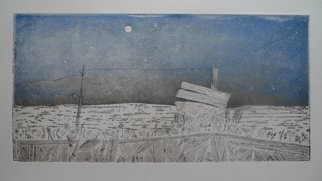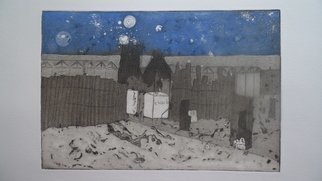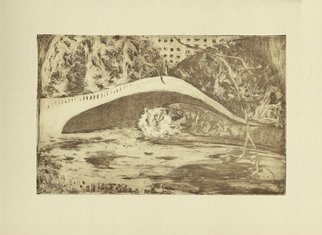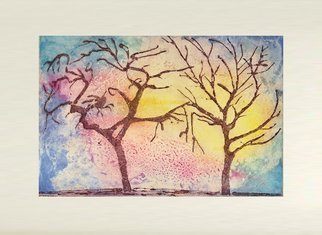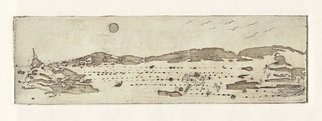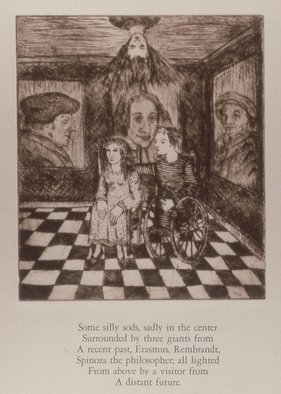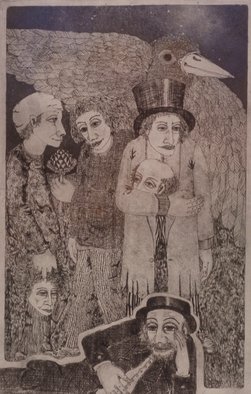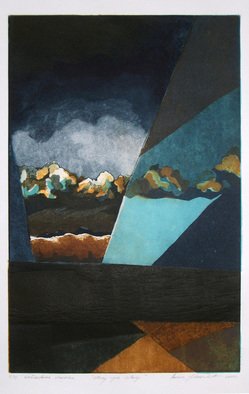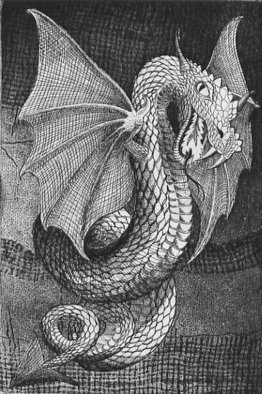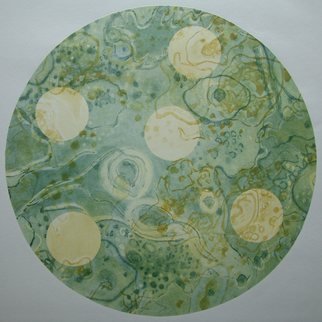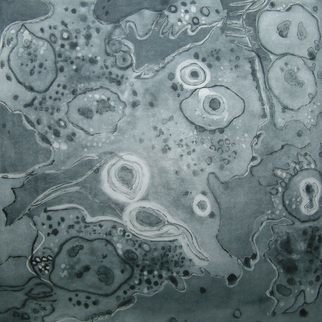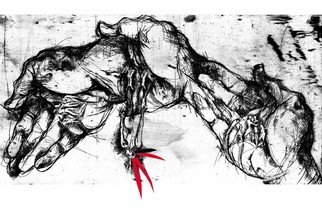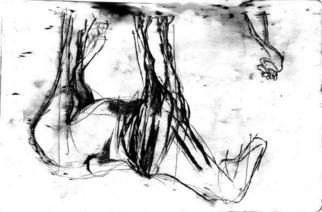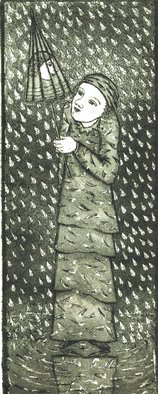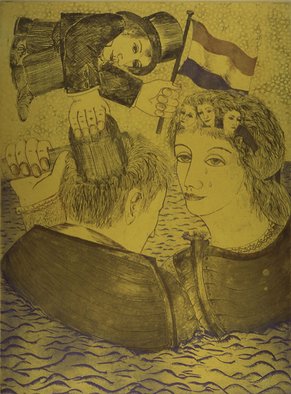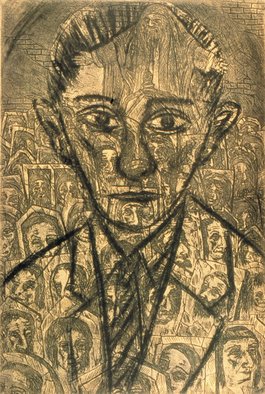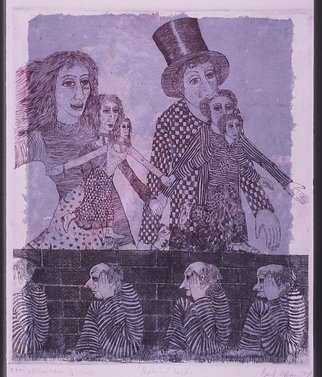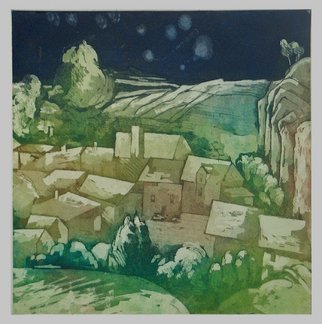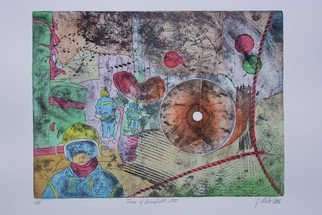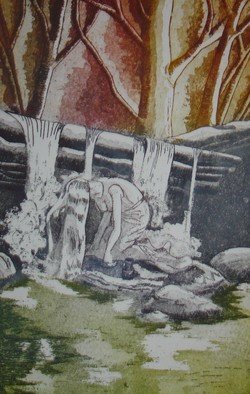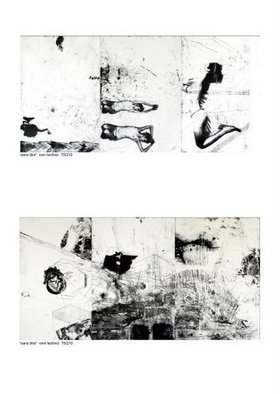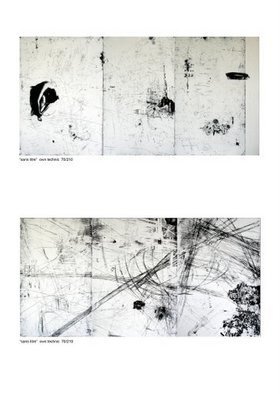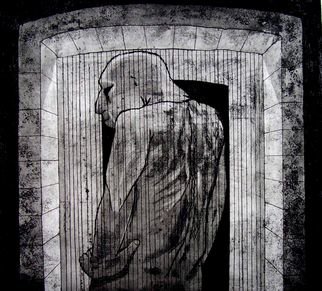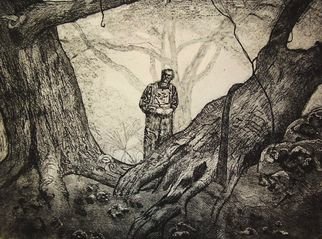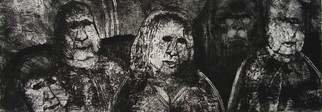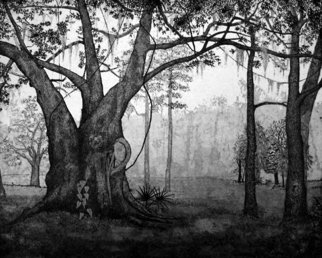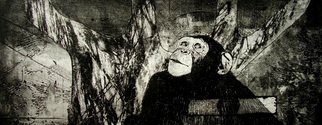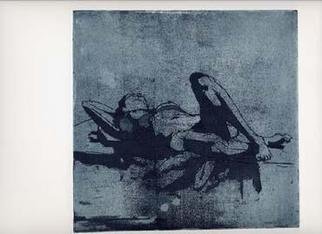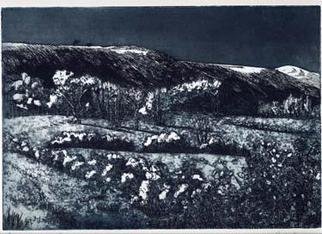Etchings / Artist Prints
Page 2 of 5

Tinko Dimov, Cecilia Sassi, Bert Menco, Anita Jovanovic, Bob Filbey, Barbara Jones, Zoja Trofimiuk, Martha Hayden, Juergen W.d. Stieler, Gonzalo Di Paolo, Agnieszka Sukiennik, David Larson Evans, John Booth offering original Etchings artworks.
Zoja Trofimiuk - Artisti?1/2s Statement My Art is my Statement. Volume and Space are concepts that have influenced my art. I am particularly fascinated by their appearance in the human body. I am interested in exploring dialogue both internal dialogue, which exists within oneself, and external connection that moves between two people or objects. My art explores i?1/2contradictionsi?1/2 which are attracted to each other and create a new whole. The human figure appeals to me as an adequate form for expressing these ideas. Working with glass has given me the opportunity to stretch the boundaries of these concepts to new limits, as well as offering me the joyful experience of playing with colour. I would like to concentrate my attention on capturing absence, an impression, commemorate memory, fleeing presence, give physical form to a spiritual value. The absence transferred into visual terms, long after it ceased to exist. In both instances, when working with bronze or glass, I apply a casting technique called i?1/2Lost Waxi?1/2. ...
Martha Hayden - My painting is both realistic and abstract, it is on that elusive edge between there and not there. On first look everything is in place, then all dissolves. I want realism and abstraction to take turns. I want a painting sometimes very evocative of time and place, sometimes overwhelming in abstract, structural logic. I look for a surprise, a drama, a different way of seeing. I try not to see anything for itself alone, but as a part of the whole. In this context, my subjects take on meanings other than the accustomed ones. They are more than still life and landscape; they are comments on thinking and seeing. ...
Juergen W.d. Stieler - Born 1955 in the town of the pied piper in Lower Saxony, Germany. I left my home town when I was 21 and live in Flensburg, the most northern German city, next to the Danish border. Drawing, painting and printmaking are the techniques I work in. Recently I experimented upon "collecting traces" and converted them in prints to achieve authentic references of everyday occurrences or remarkable events, e.g. the Buncefield oil depot desaster in England Nov 2005....
David Larson Evans - Without question drawing is the heart and soul of art.Becoming a trained draftsman helps to make us capable of mastering any medium.Studying Art for a lifetime ,from New York to Europe. I have many people to thank for helping make it a lifelong quest.In these etchings I am in search of something simple yet hopefully vital, even perhaps elemental(everyone can respond to something elemental). Clarity is important but by adding a hint of mystery i find it makes a more compelling and pleasing work of art. As a Printmaker it is often most difficult to force a piece of flat metal into a negative of an image that matches the original idea (whats in the had). It is a challenge to say the least. My etchings are always limited to 5o prints or less at which time the plates are defaced(keeping the low edtion size). One excitement of being an artist comes with the start of a new piece. Artist can often find inspiration in the other arts. Lately the opera has peaked some interest along with portrait painting in oils.It is wonderful when we find things that move us. The heart controls many ...
David Larson Evans -
(Page 2 of 5) - MORE ARTWORKS
Artists Describing Their Art:
Bert Menco - Though they may seem simple, especially my drawings and intaglio prints but also my paintings are actually quite elaborate; half a year's work on an image is no exception for me. I draw directly or use small sketches, even doodles, as image-generating nuclei, often combining two or three that appear to complement each other. I rarely use concrete references, but rather work from inner visions. I tend to be narrative in my own art, perhaps poetic narrative. I don't see my images as telling a story but rather as reflections of inner feelings, similar to some poetry, and would like observers to read them as such. I like to believe that my work carries a certain mystery. My images are very much "inside out.aEUR? I have usually some idea of what I want to obtain, but much of the image is generated while I draw or paint. The end product always surprises me; I am often amazed that there even is an end product. Analyzing my own art is difficult but I think that the dreamlike images tend to deal with confined spaces which contain certain characters that reach out to one another but do not quite ...Zoja Trofimiuk - Artisti?1/2s Statement My Art is my Statement. Volume and Space are concepts that have influenced my art. I am particularly fascinated by their appearance in the human body. I am interested in exploring dialogue both internal dialogue, which exists within oneself, and external connection that moves between two people or objects. My art explores i?1/2contradictionsi?1/2 which are attracted to each other and create a new whole. The human figure appeals to me as an adequate form for expressing these ideas. Working with glass has given me the opportunity to stretch the boundaries of these concepts to new limits, as well as offering me the joyful experience of playing with colour. I would like to concentrate my attention on capturing absence, an impression, commemorate memory, fleeing presence, give physical form to a spiritual value. The absence transferred into visual terms, long after it ceased to exist. In both instances, when working with bronze or glass, I apply a casting technique called i?1/2Lost Waxi?1/2. ...
Martha Hayden - My painting is both realistic and abstract, it is on that elusive edge between there and not there. On first look everything is in place, then all dissolves. I want realism and abstraction to take turns. I want a painting sometimes very evocative of time and place, sometimes overwhelming in abstract, structural logic. I look for a surprise, a drama, a different way of seeing. I try not to see anything for itself alone, but as a part of the whole. In this context, my subjects take on meanings other than the accustomed ones. They are more than still life and landscape; they are comments on thinking and seeing. ...
Juergen W.d. Stieler - Born 1955 in the town of the pied piper in Lower Saxony, Germany. I left my home town when I was 21 and live in Flensburg, the most northern German city, next to the Danish border. Drawing, painting and printmaking are the techniques I work in. Recently I experimented upon "collecting traces" and converted them in prints to achieve authentic references of everyday occurrences or remarkable events, e.g. the Buncefield oil depot desaster in England Nov 2005....
David Larson Evans - Without question drawing is the heart and soul of art.Becoming a trained draftsman helps to make us capable of mastering any medium.Studying Art for a lifetime ,from New York to Europe. I have many people to thank for helping make it a lifelong quest.In these etchings I am in search of something simple yet hopefully vital, even perhaps elemental(everyone can respond to something elemental). Clarity is important but by adding a hint of mystery i find it makes a more compelling and pleasing work of art. As a Printmaker it is often most difficult to force a piece of flat metal into a negative of an image that matches the original idea (whats in the had). It is a challenge to say the least. My etchings are always limited to 5o prints or less at which time the plates are defaced(keeping the low edtion size). One excitement of being an artist comes with the start of a new piece. Artist can often find inspiration in the other arts. Lately the opera has peaked some interest along with portrait painting in oils.It is wonderful when we find things that move us. The heart controls many ...
David Larson Evans -
